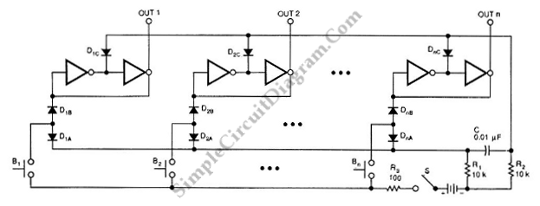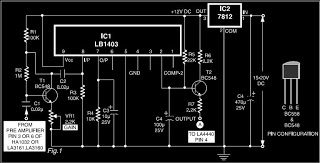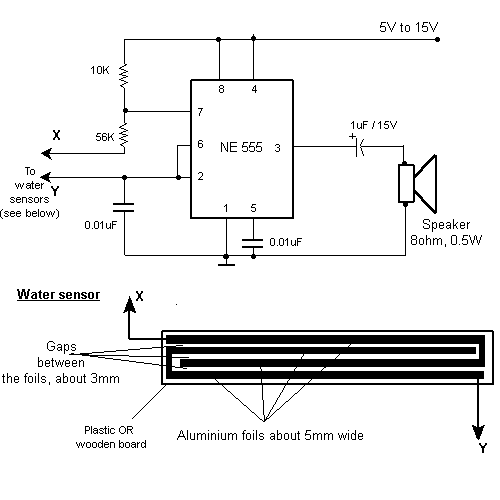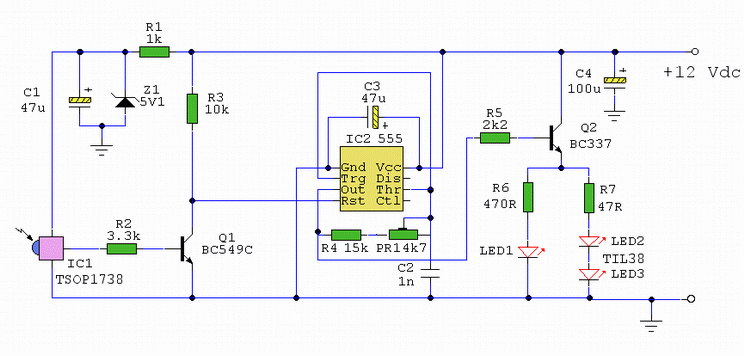
Radio Buttons Using Push On Switch Latching Circuit

This is a switching circuit that provides a latching mechanism to create a set of radio buttons using push buttons. This circuit consists of an interlocking circuit.
The switching circuit operates on the principle of latching, allowing multiple push buttons to function as a set of radio buttons. When one button is pressed, it activates the interlocking circuit, ensuring that only one button remains active at any given time. This is achieved through a combination of resistors, transistors, and possibly diodes, which work together to maintain the state of the last button pressed while deactivating the others.
The circuit typically includes a power source, which energizes the components, and a ground connection to complete the circuit. Each push button is connected to a transistor that serves as a switch. When a button is pressed, it sends a signal to the base of the corresponding transistor, allowing current to flow from the collector to the emitter, thus turning it on. The interlocking mechanism is established by connecting the output of each transistor to the base of the others, creating a feedback loop that ensures only one can be active.
Additional components may include pull-down resistors to prevent floating states when buttons are not pressed, and capacitors for debouncing to eliminate noise from mechanical switch contacts. This design is particularly useful in applications where a user must select one option from a set, such as in user interfaces for electronic devices, ensuring a clear and intuitive operation.This is a switching circuit that provide latching mechanism to make a set of radio buttons using push buttons. This circuit consist of interlocking circuit.. 🔗 External reference
The switching circuit operates on the principle of latching, allowing multiple push buttons to function as a set of radio buttons. When one button is pressed, it activates the interlocking circuit, ensuring that only one button remains active at any given time. This is achieved through a combination of resistors, transistors, and possibly diodes, which work together to maintain the state of the last button pressed while deactivating the others.
The circuit typically includes a power source, which energizes the components, and a ground connection to complete the circuit. Each push button is connected to a transistor that serves as a switch. When a button is pressed, it sends a signal to the base of the corresponding transistor, allowing current to flow from the collector to the emitter, thus turning it on. The interlocking mechanism is established by connecting the output of each transistor to the base of the others, creating a feedback loop that ensures only one can be active.
Additional components may include pull-down resistors to prevent floating states when buttons are not pressed, and capacitors for debouncing to eliminate noise from mechanical switch contacts. This design is particularly useful in applications where a user must select one option from a set, such as in user interfaces for electronic devices, ensuring a clear and intuitive operation.This is a switching circuit that provide latching mechanism to make a set of radio buttons using push buttons. This circuit consist of interlocking circuit.. 🔗 External reference





